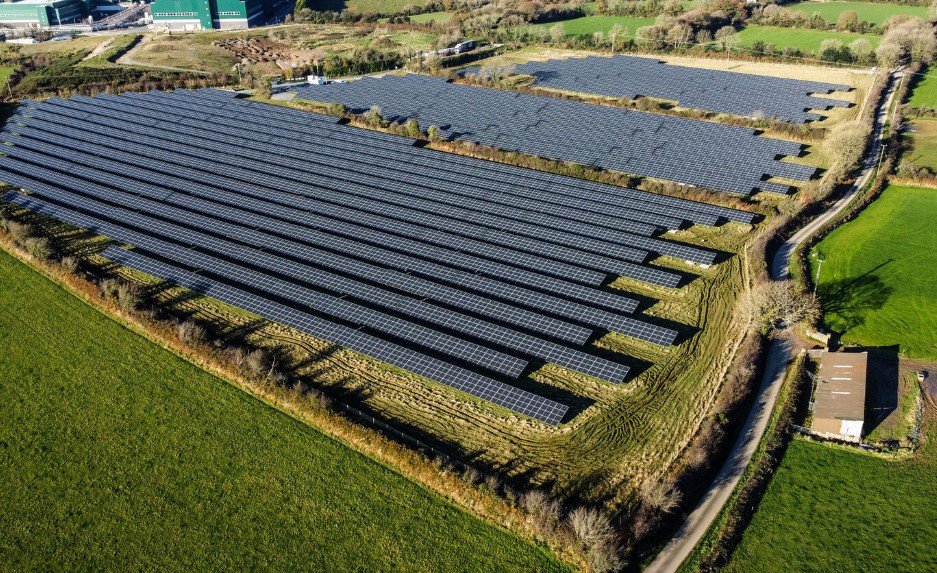Georgia Power just got the thumbs up from state regulators for five new large-scale solar deals, adding over 1,000 megawatts of clean energy to the grid. This move, approved on September 5, 2025, by the Georgia Public Service Commission, aims to boost renewable power and meet growing demand through the company’s CARES 2023 program.
These power purchase agreements mark a key step in Georgia’s push toward sustainable energy. They come at a time when the state is ramping up efforts to cut carbon emissions and create jobs in the green sector.
Details of the Approved Solar Deals
The approvals cover five utility-scale solar projects that together will generate 1,068 megawatts of power. This is enough to supply electricity to hundreds of thousands of homes each year.
Each project has a specific timeline and setup. Developers will build and run the sites, while Georgia Power buys the energy under long-term contracts.
The deals stem from bids in a request for proposals tied to the 2022 integrated resource plan. This plan outlines how the utility will meet future energy needs with a mix of sources.
Regulators reviewed the proposals for cost, reliability, and benefits to customers. The final nod ensures these projects align with state goals for affordable and clean power.

Locations and Capacities Breakdown
These solar farms will spread across several counties in Georgia, tapping into the state’s sunny climate. Each one brings unique features, like battery storage in one case.
Here’s a quick look at the projects:
| Project Location | Capacity (MW) | PPA Duration (Years) | Special Features |
|---|---|---|---|
| Coffee County | 200 | 30 | Standard solar farm |
| Mitchell County | 260 | 25 | Largest in the group |
| Laurens County | 225 | 20 | Focus on quick rollout |
| Wilkinson County | 183 | 20 | Includes 91.5 MW battery storage |
| Jefferson County | 200 | 20 | Community benefits planned |
This setup allows for diverse energy output across regions. The battery in Wilkinson County will store power for peak times, improving grid stability.
Planners chose these spots for their land availability and connection to existing power lines. Local communities stand to gain from construction jobs and tax revenue.
How These Projects Support CARES 2023
The CARES 2023 program lets businesses and large customers subscribe to renewable energy without building their own systems. These new solar deals will supply the clean power needed for that.
Georgia Power launched CARES in response to demand from companies wanting green options. It’s part of a broader effort to reach 11,000 megawatts of renewables by 2035.
Participants in CARES get credits on their bills for the solar energy produced. This helps firms meet sustainability goals while keeping costs in check.
Recent trends show more corporations pushing for such programs. For instance, tech giants and manufacturers in Georgia have signed up, driving the need for more capacity.
By tying these projects to CARES, the utility ensures the energy goes where it’s most wanted. It also spreads the benefits to all customers through a more resilient grid.
The program builds on past successes, like earlier solar expansions that added thousands of jobs statewide.
Development Timeline and Next Steps
Third-party companies won the bids and will handle building the sites. Construction could start as early as 2026, with full operations by 2028 or sooner.
Georgia Power will oversee the power purchase side, ensuring smooth integration into the grid. This includes upgrades to transmission lines where needed.
Challenges like supply chain issues for panels have eased in recent years, thanks to domestic manufacturing boosts. Georgia’s own solar factories, such as those in Dalton, support this growth.
Regulators will monitor progress to keep things on track. Public input played a role in the approval process, addressing concerns about land use and wildlife.
Broader Impact on Georgia’s Energy Future
This approval fits into national trends toward renewables, especially after federal incentives like the Inflation Reduction Act spurred investments. Georgia has seen a boom in solar, ranking among top states for new installations in 2024.
Environmentally, these projects will cut greenhouse gas emissions by offsetting fossil fuel use. Estimates suggest they could avoid millions of tons of carbon dioxide annually.
On the economic side, expect hundreds of jobs during construction and ongoing operations. Local economies in rural counties will benefit most.
It also ties into recent events, like the massive battery storage deals with companies such as Tesla for other Georgia sites. That project, announced in August 2025, adds to the state’s energy storage push.
Looking ahead, Georgia Power plans more procurement rounds. This could lead to even larger renewable additions by 2030.
Experts say these steps position Georgia as a leader in the Southeast for clean energy. With sunshine abundant and policies supportive, the state is set for continued growth.
If this story caught your eye, share it with friends or drop a comment below on what you think about Georgia’s solar push. Your thoughts could spark great discussions.
